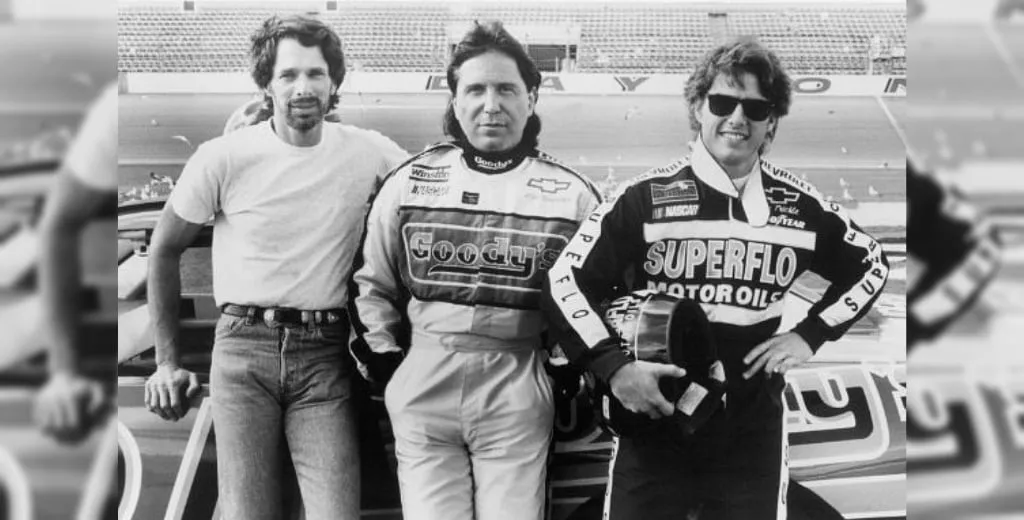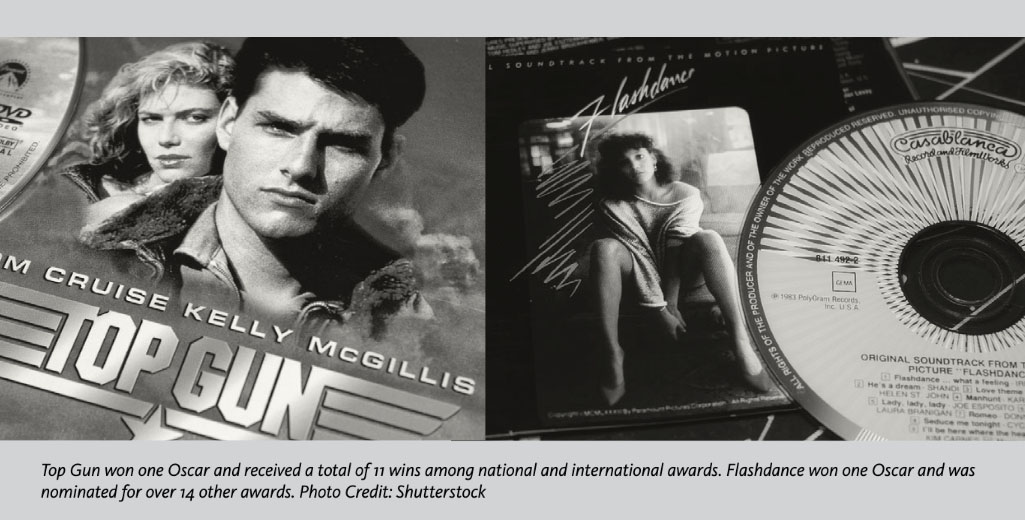
By Sage Kiernan-Sherrow, UOAA Communications Student Associate
If you recognize the name Don Simpson you are probably a fan of the high-concept blockbuster style films that dominated the 1980s.
The UO alumni, who graduated in 1987 with a journalism degree, produced some of Hollywood’s most well-known and highest-grossing movies, including Flashdance (1983), Beverly Hills Cop (1984), and Top Gun (1986) before succumbing to a drug overdose in 1996 at age 52.
But his end was very different from his beginning.
Growing up in Juneau, Alaska, Simpson was raised in a strictly religious household and was a straight-A Bible student, according to a 1994 New York Times article. He didn’t become Don Simpson as we know him until long after graduating from the UO, working first as a ski instructor in Utah before he got his big break in film.
In 1973, he landed a job working for Paramount Pictures where he stayed, slowly climbing the ladder until he was named president of production in 1981. He was subsequently fired a year later after issues with drug addiction began interfering with his work. It would not be his last stint at Paramount, however.
He began a partnership with Jerry Bruckheimer and the two quickly became Hollywood movie masterminds. Simpson was the storyteller, while Bruckheimer understood the details of cinema itself. According to many accounts, although they were polar opposites they seemed to complement one another. In 1985 and 1988, they were named Producers of the Year by the National Association of Theatre Owners.
Their early success skyrocketed them to near-stardom, and they certainly acted the part, especially Simpson. He truly encapsulated the Hollywood stereotype, embracing hard drugs, fast cars, and even dabbling in scientology, like his protege, Tom Cruise. He also became obsessed with his appearance, opting for plastic surgery, going on fad diets, and maintaining a bad boy aesthetic.
And by many accounts he was, indeed, a bad boy—especially regarding women. He was allegedly obsessed with domination during sex and it was an open secret that he hired prostitutes to fuel his obsession. In the 1995 Joanne Parrent book You’ll Never Make Love in this Town Again, some of the women hired by Simpson detail their worst interactions with him.
But he was reportedly equally as dishonorable in his professional life. A sexual harassment case filed against Simpson by his former secretary, Monica Harmon, in 1988 alleged that Simpson would repeatedly scream profanities at her and require her to do unethical acts such as manage lists of the girls he hired for sex, according to an article published by LA Weekly.
Simpson fought fire with fire and eventually all of Harmon’s accusations were dismissed in court. However, people who worked closely with Simpson assert that all of her accusations were true.
Charles Fleming even quotes one man who knew Simpson in his biography High Concept, as saying, “He was the epitome—as a successful man, as a representative of Hollywood, as a male animal—of the kind of person who made your skin crawl.”
Throughout this time; however, and despite the mounting evidence that Simpson, with his penchant for excess and taking risks, was becoming unhinged, Bruckheimer remained Simpson’s rock. Simpson never married and one Wall Street Journal article implies that Bruckheimer may have been the only stable relationship that Simpson had ever maintained.
They were smart business partners. They made sure to budget their films wisely to maximize profit and they stuck to their guns in terms of their business model, consistently following the outline of what had made them so famous in the first place—that high-concept style. That would, however, be their downfall in Days of Thunder, the film many call the catalyst for the end of the Bruckheimer-Simpson partnership and Simpson’s eventual demise.
After Days of Thunder (1990) failed at the box office, the Bruckheimer and Simpson partnership began to crumble. Simpson isolated himself, either secluding himself in his Los Angeles mansion or detoxing at Canyon Ranch, a luxury spa in Arizona. He later hired Dr. Stephen Ammerman to allegedly help him recover from his drug addiction, but in almost Gatsby-like style, it was Ammerman who fell victim to drugs, overdosing in Simpson’s pool house only months before Simpson met his own end. According to the Wall Street Journal, that was the end of the road for Bruckheimer.
Simpson’s death has been subject to speculation, with many conspiracy theories arising from it. The last person to hear from him before his death was James Toback, a fellow screenwriter who allegedly called him for advice the night of Simpson’s overdose. Toback reported no inconsistencies in the producer’s mental state.
But as with most of the going-ons in Hollywood, as outsiders we may never really know the full story. What we’re left with are the accounts of the people who knew Simpson best, and regardless of whether they’re recounting his influence on the film industry or the torment he caused his alleged victims, most agree that he was notorious.

